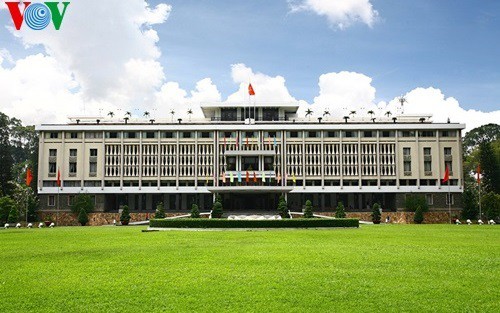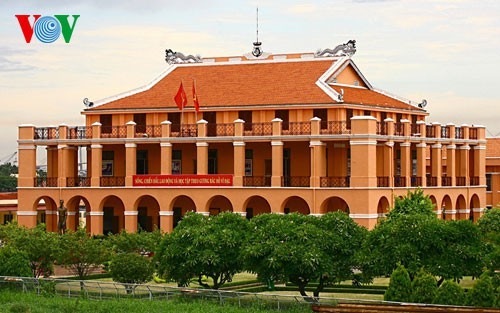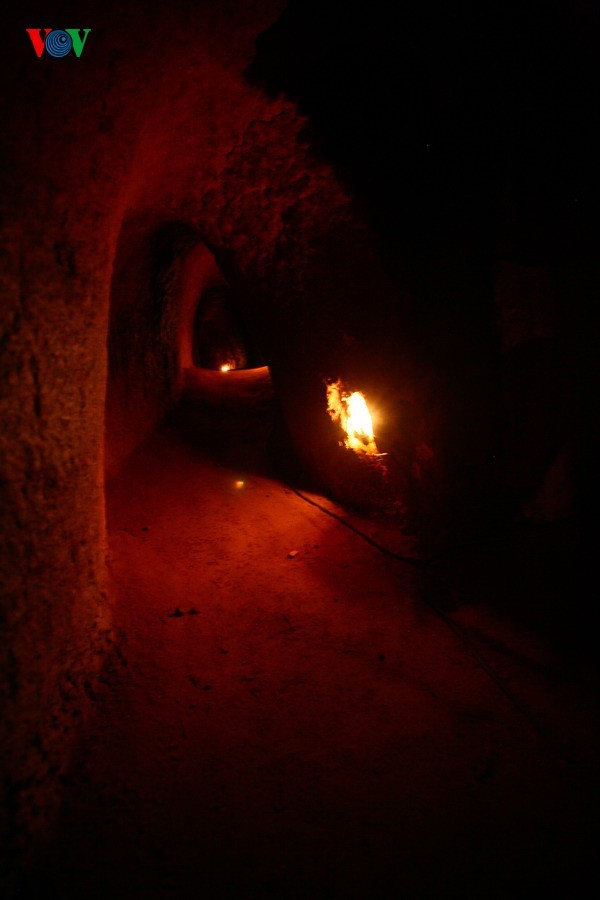(VOVWORLD) - Historical relic sites in Ho Chi Minh City are packed with tourists these days as the spirit of the great victory in 1975 that liberated the south and reunified Vietnam lingers on. The most-visited attractions are Independence Palace, Nha Rong Wharf, and Cu Chi Tunnel, which are associated with national liberation and reunification.
Independence Palace is a prominent historical site in Ho Chi Minh City, covering 18 hectares at 106 Nguyen Du street in District 1.
In 1868, when Vietnam was under the French colonial rule, Governor General of southern Vietnam Pierre-Paul De La Grandière laid the first stone for an imposing new colonial government headquarters in Sai Gon-Gia Dinh, the city’s name at that time. The palace, originally named Norodom Palace, served as the home and command center of the Governor General.
 The Independence Palace The Independence Palace |
On March 9, 1945, Japan wrested control of French Indochina from the French, and Norodom Palace became the headquarters from which Japanese colonial officials in Vietnam administered six southern regions.
After France’s withdrawal from Vietnam in 1954, President Ngo Dinh Diem of the proclaimed Republic of Vietnam in the southern region renamed Norodom Palace. After the new Independence Palace was severely damaged by an airstrike in 1962 during a failed attempt to assassinate President Diem, it was rebuilt with a totally new architectural design, but was not inaugurated until four years later because Diem was successfully assassinated in November, 1963.
At 11:30 am on April 30, 1975, a North Vietnamese Army tank knocked down the Independence Palace gate, marking the final collapse of the Republic of Vietnam and the reunification of northern and southern Vietnam. The palace received a new name - Reunification Palace - the same year. It was officially recognized as a Historical-Cultural Relic in 1976 and a National Special Relic in 2009.
Nguyen Hoang, a tourist from Hanoi, said: “Documentaries recounting the moment a tank crashed through the Independence Palace gate persuaded me and my family to visit this landmark, which has really made an impression on me. I feel like I’m reliving that glorious moment. I’ve learned more about the April 30 victory and the sacrifices our predecessors made for Vietnam’s independence and freedom”.
 The Nha Rong Wharf The Nha Rong Wharf |
Not far from Independence Palace is the Nha Rong wharf, another iconic building in Ho Chi Minh City which was originally a commercial wharf on the Sai Gon River. It was built in 1864 in a Western architectural style with two dragons lying on top of it. The name “Nha Rong” means “house of dragons”. Nha Rong wharf was the first thing the French built after their capture of Sai Gon.
The building has an association with Ho Chi Minh, who departed Vietnam on June 5, 1911, from this wharf aboard the French ship Admiral Latouche Treville to begin a 30-year journey around the world in search of national salvation. Nha Rong wharf became a memorial to Ho Chi Minh in 1975, and then in 1995 became the Ho Chi Minh Museum. Currently on display are 20,000 items, many of which evoke the warm feelings that existed between Ho Chi Minh and the people of southern Vietnam.
 The whole tunnel network is dug manually. The whole tunnel network is dug manually. |
70 kilometers west of downtown Ho Chi Minh City is Cu Chi district’s extensive labyrinth of underground tunnels, which were dug in 1946 during the struggle against the French.
During the American War, the tunnels were extended over an area of 250 kilometers and came to resemble a vast spider web incorporating numerous bunkers, bomb shelters, kitchens, water wells, and an amazing air ventilation system. Soldiers cooked, ate, slept, worked, and attended classes in these tunnels as the war raged above them. The tunnels sheltered commanders, soldiers, and civilians fleeing the fighting. American troops raided the Cu Chi tunnels numerous times, attacking them with B52 bomber aircraft, tanks, and heavy artillery, but failed to destroy or close them.
Tran Cong Hau of Kien Giang province told us: “Until I visited the Cu Chi tunnels, I never fully understood the hardship previous generations endured in the cause of national defense. I visited these underground tunnels, houses, and hospitals, to see firsthand how the people of Cu Chi lived during the war. My European friends were also deeply impressed by the creativity and effort that went into building this marvel.”
Other historical relic sites in Ho Chi Minh City include the War Remnants Museum, Rung Sac military base, and a secret underground room of the Sai Gon Special Force. Located at 113A Dang Dung street, the site currently showcases old photos, weapons, and vintage motorbikes used by the forces to attack the Independence Palace.